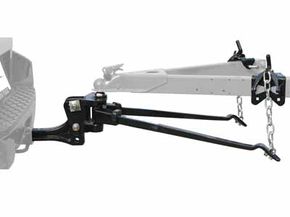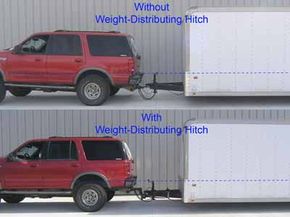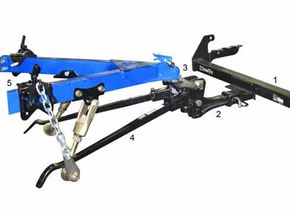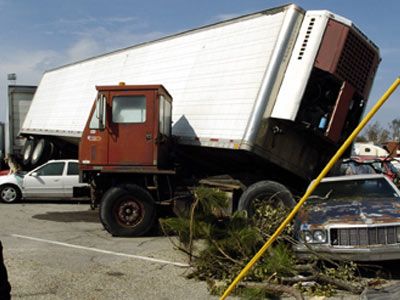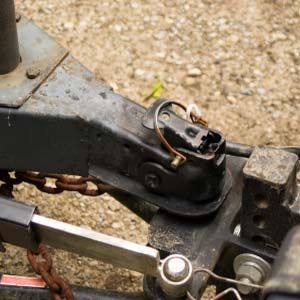Most people who've driven a trailer have experienced at least a few heart-pounding moments when their trailers started to sway and they worried they might lose control of the vehicles. One way to help ensure disaster won't strike, especially if you're pulling a very large load, is to use a weight distribution system.
To understand how a weight distribution system works, we need to familiarize ourselves with two terms. The first one is gross trailer weight (or GTW), which, as you can probably guess, describes the total weight of the trailer, including cargo, fuel and anything else you've got in there. The second term is tongue weight. Tongue weight is the portion of the load (generally between about 10 and 15 percent of the gross trailer weight) that's far enough forward in the trailer that it presses down on the hitch. Tongue weight (or TW) also includes any weight that's behind the rear axle of the towing vehicle. So if you plan on loading up the trunk, you'll need to factor that in.
Advertisement
Having too much tongue weight in relation to gross trailer weight can cause the hitch of the trailer -- and the rear axle of the tow vehicle -- to dive, meaning the front of the trailer will head toward the ground, bringing the front of the towing vehicle off of the ground. Obviously, if your tow vehicle dives too far, such as in situations when you need to brake quickly, you'll loose braking traction and steering control of the wheels on the front axle, which can be very dangerous. The opposite is also true of too little relative tongue weight. In those situations, a trailer will be more prone to sway, and it can swing back and forth out of control. Because of these two factors, you can see why finding the delicate balance between tongue weight and gross trailer weight is so vital.
Weight distribution hitches can help prevent those dangerous conditions and improve a vehicle's ability to turn, brake and steer, especially in the case of large loads, which can be hard to maneuver in a safe and controlled manner. On the next page, we'll take a closer look at how this is possible.
Advertisement
